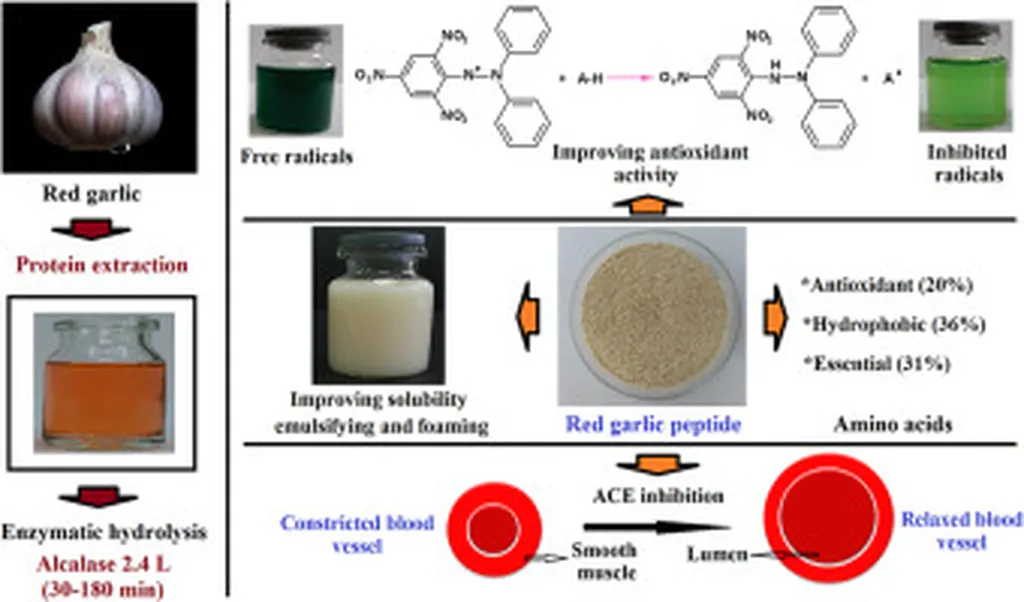In the quest for sustainable and functional plant-based proteins, researchers have turned to an unlikely candidate: garlic. A recent study published in the *Journal of Agriculture and Food Research* (or *Nongye yu Shizhong Yanjiu* in Chinese) has shed light on how different extraction methods can influence the functional and structural attributes of Allium sativum L. proteins, potentially opening new avenues for the food and nutraceutical industries.
Led by Jian Liu from the College of Agriculture and Bioengineering at Heze University and the Institute of Biotechnology at the Chinese Academy of Tropical Agricultural Sciences, the research compared four extraction methods: NaCl-assisted acid precipitation (NA), alkali-soluble alcohol precipitation (AA), ammonium sulfate precipitation (AS), and alkali-soluble acid precipitation (AC). The findings reveal that the choice of extraction method can significantly impact the yield, composition, structure, and functionality of garlic proteins.
The AS method stood out for its high protein yield (78.5 ± 0.4 g/100g), amino acid content (774 ± 2 mg/g), and α-helix proportion (35 ± 2 %), along with robust antioxidant capacity. “The AS method offered an optimal balance in efficiency and functionality, making it suitable for large-scale preparation of functional garlic protein,” Liu explained. This could be a game-changer for industries looking to scale up production of plant-based proteins with enhanced nutritional profiles.
Meanwhile, the AA method showed exceptional emulsion stability (84.5 %) and ABTS+ scavenging activity, while the AC method demonstrated strong DPPH radical scavenging capabilities. These variations highlight the potential for tailored extraction methods to meet specific functional requirements in food and nutraceutical applications.
Structural analyses further revealed that extraction methods significantly affected particle size, zeta potential, and secondary structure. This understanding could pave the way for more targeted development and application of plant-derived proteins. “Alcohol- and acid-based methods showed potential for specific functional applications,” Liu noted, suggesting that different extraction techniques can be optimized for various industrial needs.
The study provides methodological and theoretical guidance for the targeted development and application of plant-derived proteins. As the demand for sustainable and functional food ingredients grows, these findings could shape future developments in the field, offering new opportunities for innovation and commercialization.
For professionals in the food and nutraceutical industries, this research underscores the importance of choosing the right extraction method to achieve desired functional and structural attributes. As the world continues to seek sustainable solutions, garlic proteins could emerge as a valuable resource, driven by the insights from this groundbreaking study.

